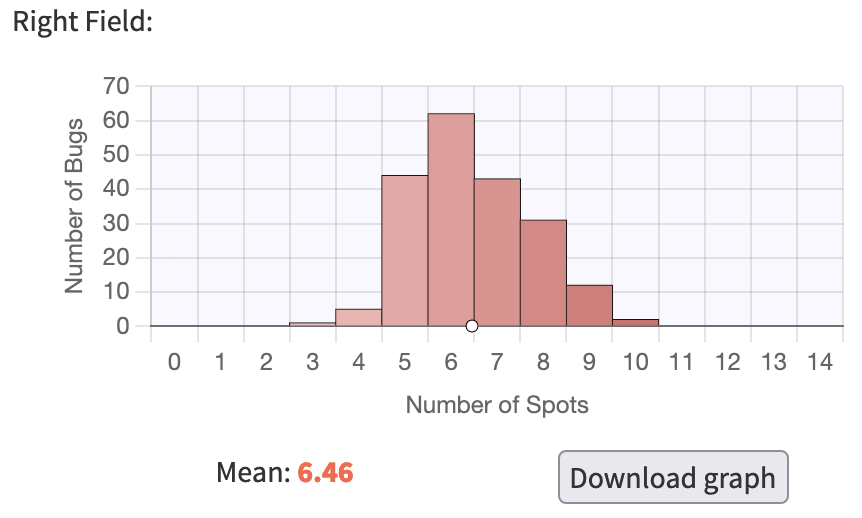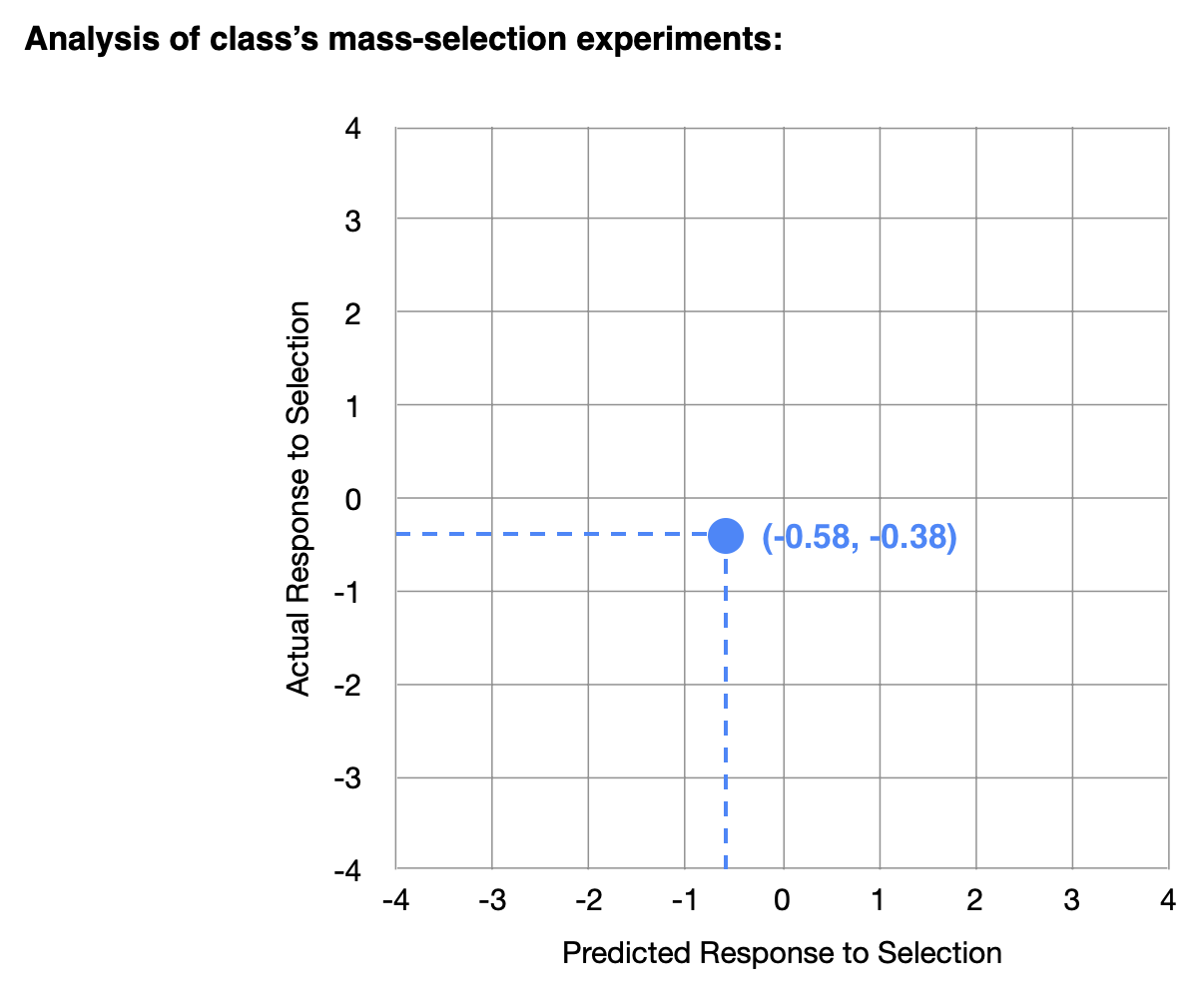7 Testing Your Prediction
Once you have calculated the predicted the response to selection, start the simulation. Run it until the Generation counter near the Start button turns to 2. This is enough time for the Right Field population to reach its maximum possible size, and for all the founders of the Right Field population to be replaced by their descendants.

Stop the simulation and note the mean of the Right Field population. Calculate the actual response to selection as the difference between this mean and the mean of the Left Field population before selection.

- How well does the actual response to selection match your prediction?
Before deciding on a firm answer to this question, you may want to compare your results to those of your classmates. Prepare a scatterplot showing the actual responses versus the predicted responses for a number of mass selection experiments.

Recall Darwin’s theory of evolution by natural selection. If a population harbors heritable variation associated with reproductive success, then the composition of population will change across generations. Even though you don’t know the identities of the genes that influence spot count, you have estimated the amount of heritable variation in your ladybug population. You have measured the strength of the selection you inmposed on the population. And you have predicted how much the average spot count will change as a result. You and your classmates have run several replicates of this procedure.
- On the whole, how well does the machinery of quantitative genetics apppear to work? That is, how accurately does it allow us to predict how populations will evolve?